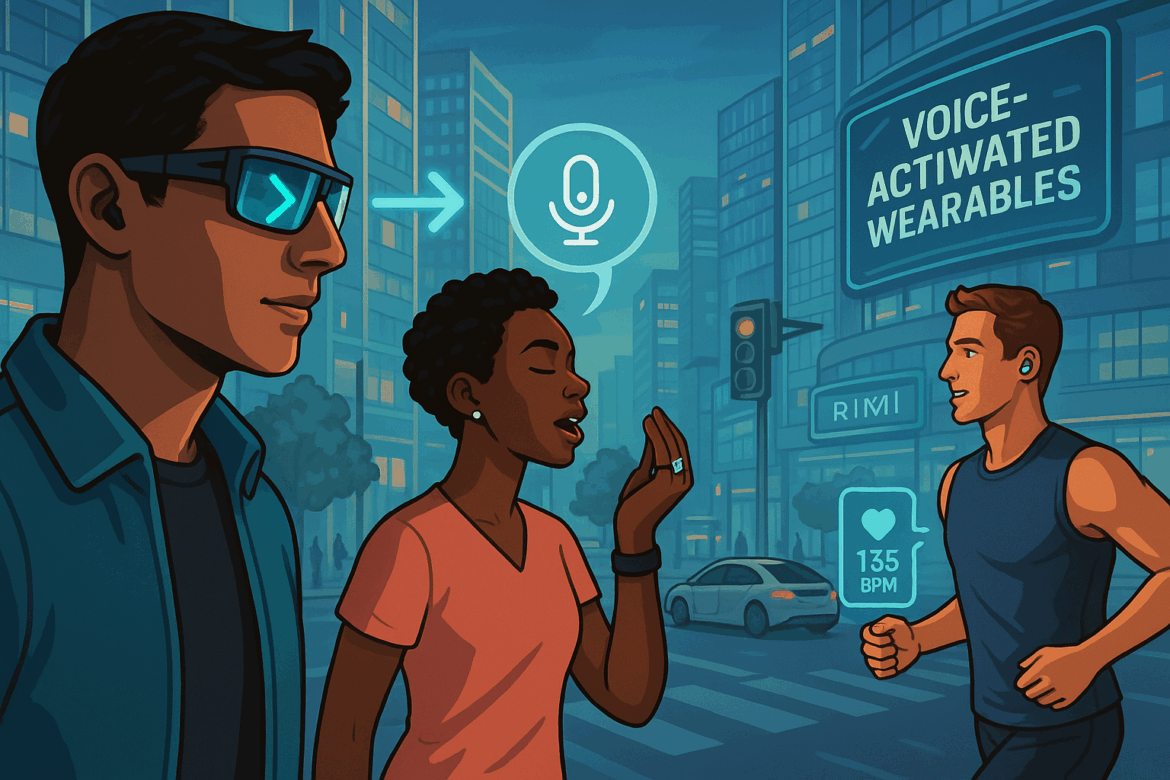We live in an era where talking to our devices is normal — it’s what we expect. From smartwatches to earbuds, voice-activated wearables have a revolution in our tech interactions. By 2025, these gadgets will be cleverer, quicker, and more helpful than ever.
Let’s dive into how voice-controlled wearables are making daily life easier more open to all, and hands-free.
What Are Voice-Activated Wearables?
Voice-activated wearables are smart devices you put on — such as watches, glasses, or earbuds — that act when you talk. You don’t need to tap, swipe, or type. You just say what you want, and the device does it for you.
Whether you need to send a text play music, set a reminder, or check your schedule — you can now do all that just by speaking.
How These Gadgets Work
These wearables run on several technologies working together:
- Voice Recognition: They know and answer to your unique voice.
- AI Helpers: Tools like Siri, Alexa, and Google Assistant help carry out your orders.
- Smart Sensors and Microphones: These catch your voice even when it’s noisy around you.
- Cloud & On-Device Processing: Some actions happen on the wearable itself, while others go to the cloud for trickier jobs.
All this happens in seconds — or faster.
Real-Life Examples: How We Use Them Today
In 2025, voice-activated wearables go beyond cool gadgets. They integrate into our daily routines. Here’s how people put them to use:
🧘 Health & Fitness
Your smartwatch starts workouts, monitors heart rates, or tracks sleep patterns — all through voice commands.
🎧 Music & Calls
Wireless earbuds respond to your voice to change songs, pick up calls, or adjust sound levels.
🗓️ Stay Organized
While your hands remain occupied, you can add events to your schedule, check the weather, or set reminders using voice control.
🚗 Drive Safer
Looking to get directions or send a message? Your voice-controlled wearable helps you keep your eyes on the road.
🏡 Control Your Smart Home
Just tell your device to lower the lights, start the coffee machine, or secure the front door — without moving a muscle.
Why Voice-First Has Become the New Standard
People love voice-activated wearables because they simplify daily life.
✅ No Buttons Needed
You don’t have to touch anything — ideal when your hands are busy or you’re moving around.
✅ Everyone Can Use Them
These gadgets prove useful for individuals with disabilities giving them more independence and command.
✅ Quick and Productive
Talking is quicker than typing. Whether you’re out for a run or whipping up a meal, using your voice allows you to juggle multiple tasks .
✅ Smooth Tech Experience
These gadgets are improving their grasp of everyday language making interactions feel more like chats — not just giving orders.
Gadgets at the Forefront
Here’s a look at some voice-controlled wearables making a splash in 2025:
- Apple Watch Ultra – Has a deeper integration with Siri and tracks health
- Google Pixel Watch 2 – Gives easy access to Google Assistant
- Amazon Echo Buds – Puts Alexa in your ears without using hands
- Meta Smart Glasses – Allow you to take photos and ask questions when you don’t have your phone
- Oura Ring (beta features) – Small ring with voice features that keep growing
Each gadget provides a different type of hands-free power, so you can pick what fits your daily life best.
Problems We Still Face
While these gadgets are helpful, they’re not perfect yet. Some areas need work:
🔒 Worries About Privacy
Voice-enabled devices listen all the time — which brings up worries about who’s hearing what.
🔋 Battery Drain
Voice activation uses more power in smaller gadgets like earbuds and rings.
🔊 Background Noise
Noisy places can throw off the microphones, though the tech keeps getting better in this area.
What’s Coming for Voice-Activated Wearables?
Looking to the future, voice-first tech continues to advance. Here’s what we can expect:
- Earbuds that translate on the spot
- Smart glasses with AR you control by voice
- AI that knows what you need before you ask
As AI gets better wearable devices will have a deeper understanding of your routines, plans, and environment. This means they’ll be able to help you more .
